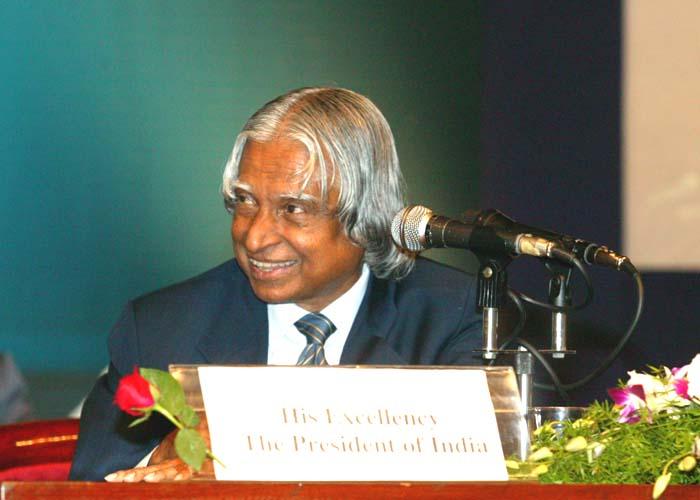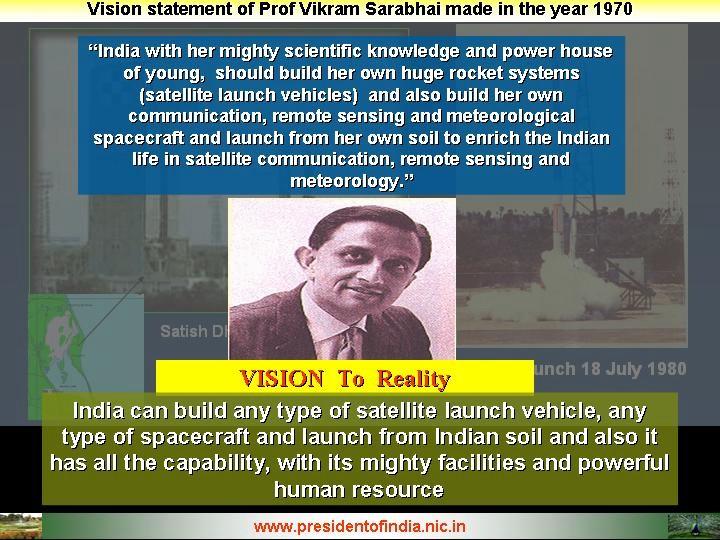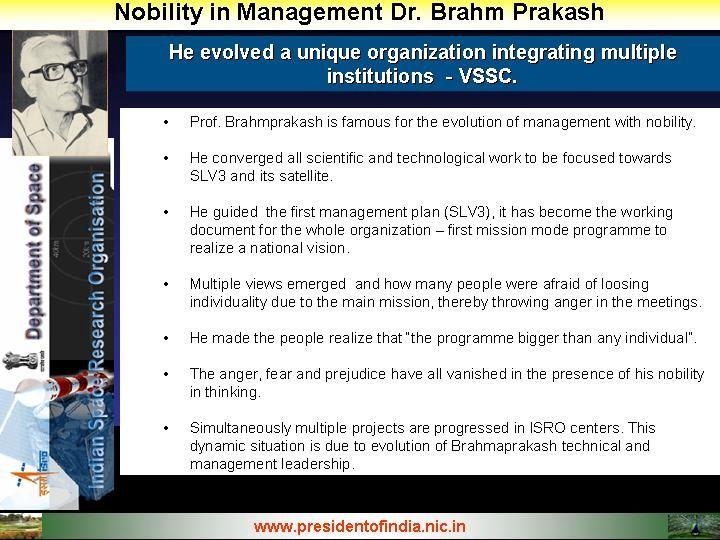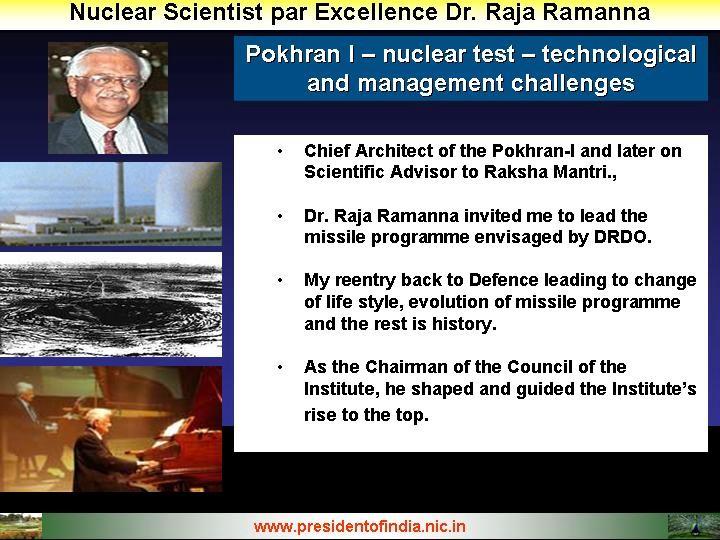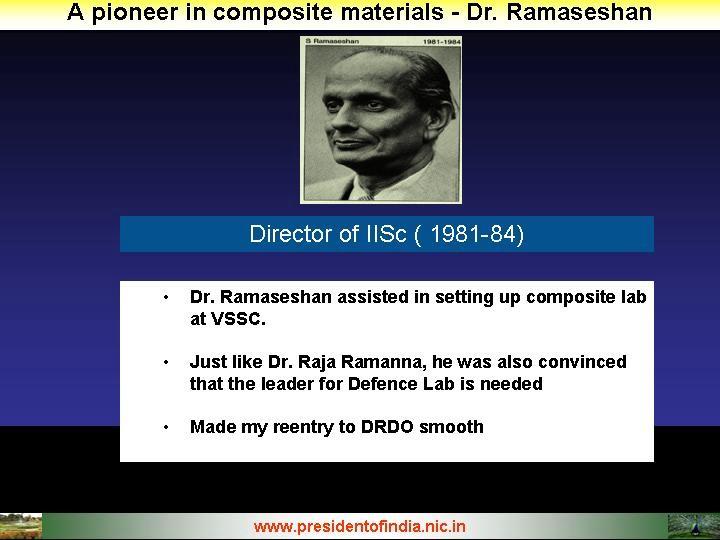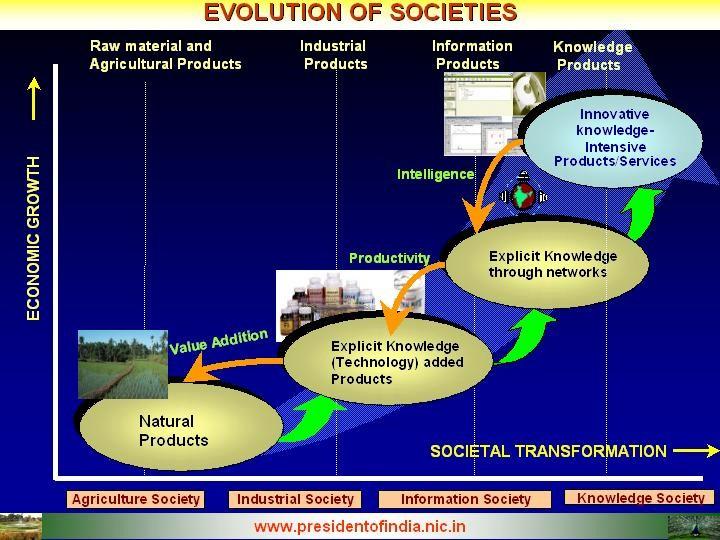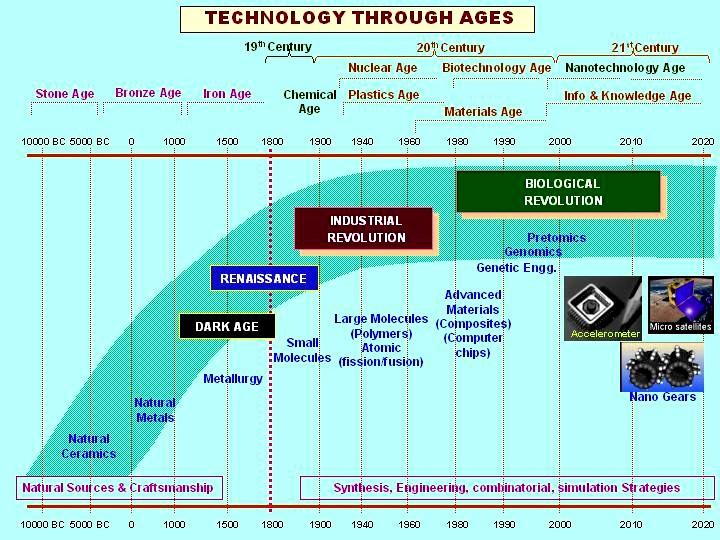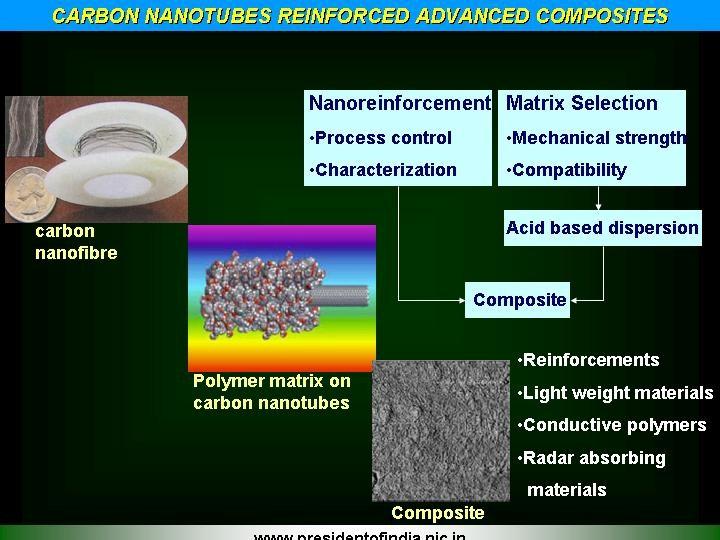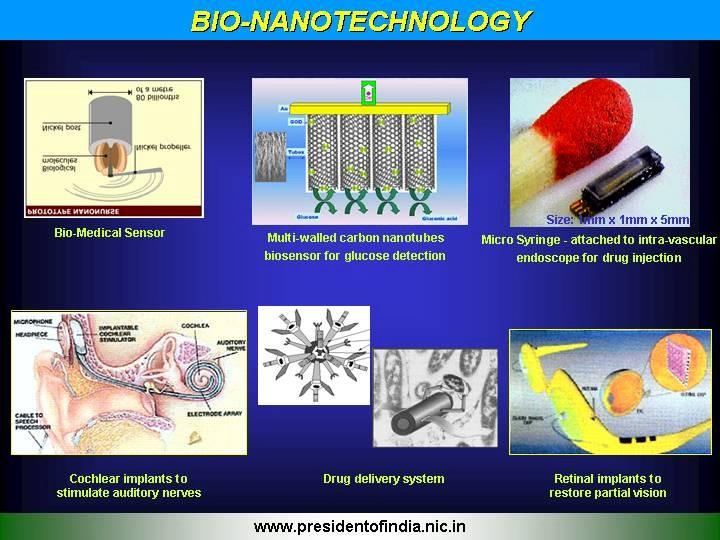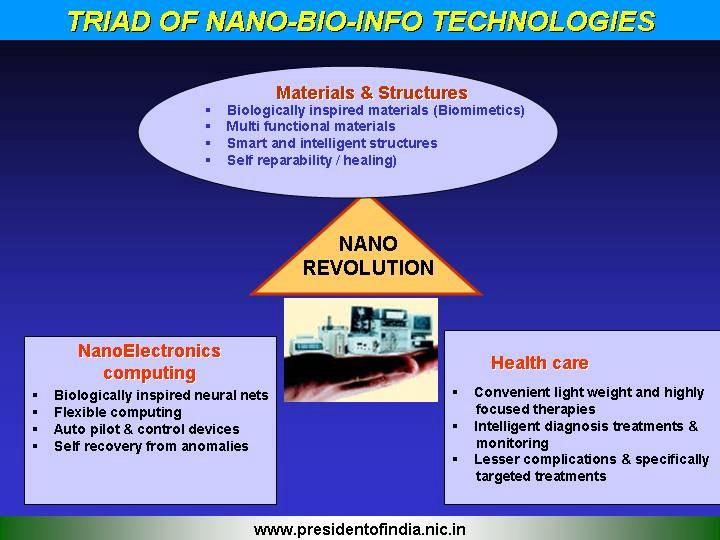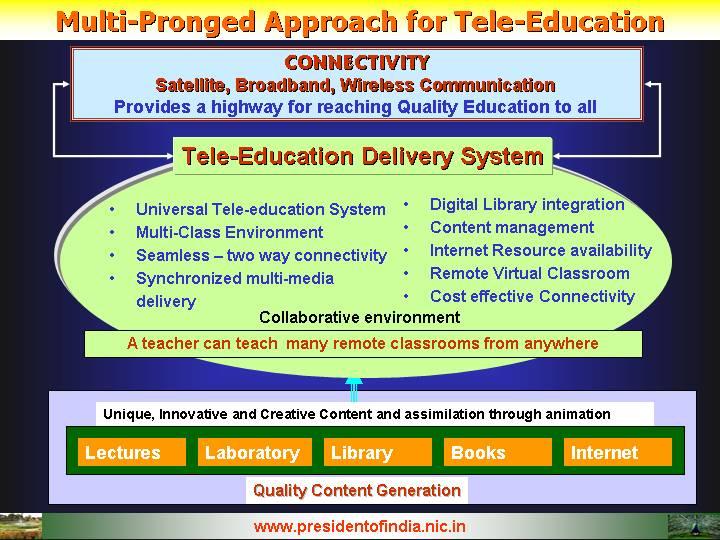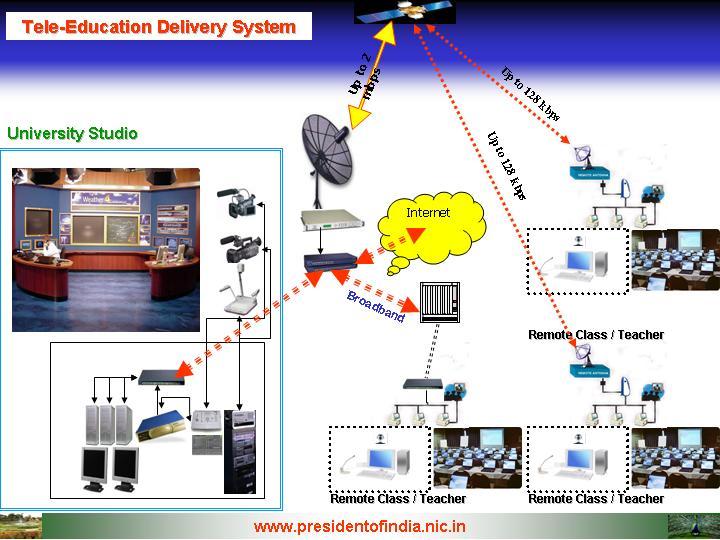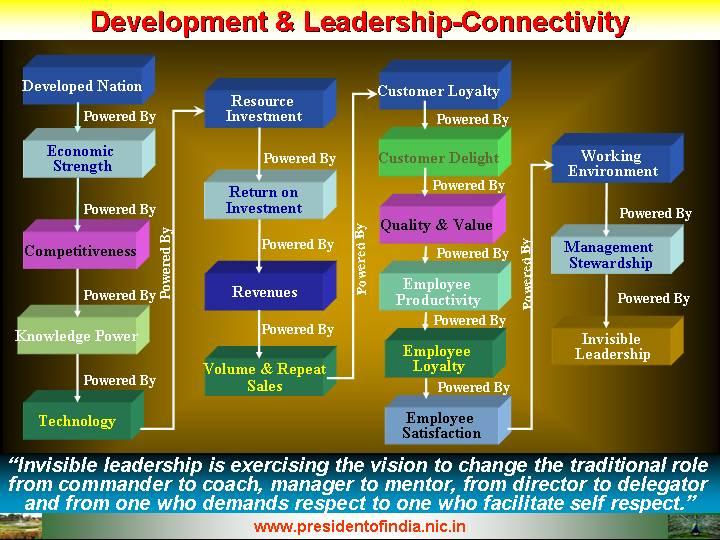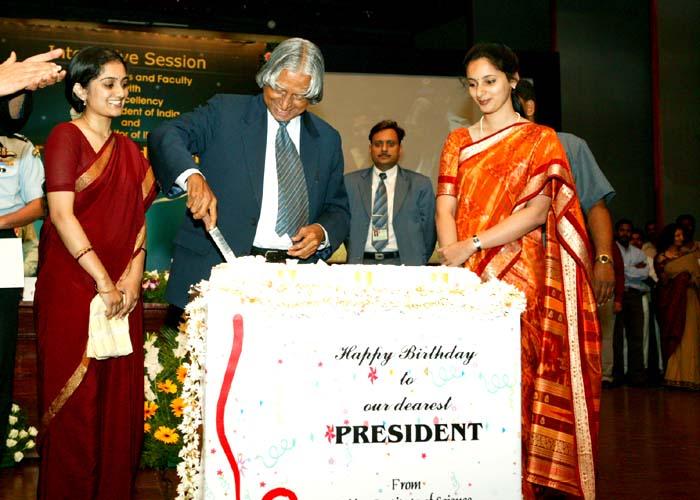Address And Interaction With The Faculty Members And The Students Of Indian Institute Of Science (Iisc)
Bangalore : 14-10-2004
Remembering the Mighty Souls and Thereon
I am delighted to meet and interact with the faculty members and the students of Indian Institute of Science (IISc). My greetings to all the members of this institute and I congratulate the faculty members for shaping the young minds. The topic for my discussion with you today is"Remembering the Mighty Souls and Thereon"
Today at midnight, I will be completing the 73rd orbit around the sun and I will be entering into the 74th orbit. I am always inspired to understand how the heavenly bodies, particularly in our galaxy the Milky Way is constantly in a dynamic equilibrium. In our galaxy, millions and millions of stars are there, but in day-to-day activities we are influenced by the sun, the earth and the moon systems; the star, planet and the satellite respectively. As per Chandrashekhar limit, our star, the sun will be shining for ten billion years and half its life is already over. It will shine for another five million years and our planet earth is the receiver with all the dynamics of atmosphere and ionosphere. So far none of them have deviated from their performance. If they do, for example, if the sun's thermo-nuclear reaction stops, the earth would be nowhere. With this awe, I always look at the heavenly bodies and I am humbled.
Like the perennial shining of the sun, IISc has been producing the leaders in science and technology and above all in teaching; personalities like C.V Raman, Homi Bhaba, M.S. Thackar, Bhagavantham, JC Ghosh, Choksi, Vikram Sarabhai, Satish Dhawan, Brahm Prakash and Ramaseshan. I shudder to think what will happen to this world when the institute stops producing such great leaders. I look at the environment, generally young intellectual, scientists, teachers selected from the young population of 560 million in this country. I would like to recall a couplet from Thirukkural by the Poet Saint Thiruvalluvar written 2500 years ago.
Quote:

It means that whatever may be the depth of the river or the lake or the pond, whatever may be the condition of the water, the lily flower always comes out and blossoms. Similarly, if there is a definite determination to achieve a goal even if it is impossible to achieve, the man succeeds.
Friends, this campus is to celebrate 100 years of its birth five years from now. What will you be? Will you be a modern Nalanda? Will researchers World over converge at the institute? Will new scientific discoveries of Nobel class emanate and benefit the human kind? Every one of you assembled here have the unique responsibility and opportunity to radiate knowledge that will transform the nation into a prosperous, happy and safe India. Will you join in this great journey of nation building?
I was asking myself what to talk to you. At first, I would like to share with you an experience, which I had with the group of people belonging to USA called ?Boston TiE (The Indus Entrepreneurs)? at Rashtrapati Bhavan last Friday. They were all entrepreneurs and one of the American entrepreneurs from that group asked me, ?Mr. President, can you remember some of the personalities other than your parents and teachers about whom we read a lot, who influenced you in shaping your career?. I mentioned about five great interconnected personalities who are connected with this Institute, who influenced my life, whom I call the ?mighty souls?. All of them had also enriched this great institution, Indian Institute of Science and radiated knowledge from this campus and thousands and thousands of students benefited by their presence.
Visionary
Very rarely, in the life journey, great human beings influence one?s life. I had the privilege of working with three such personalities. I was fortunate to work with Prof. Vikram Sarabhai for seven years. While working closely with him, I saw the dawn of the vision for the space programme in a one page statement. Witnessing the evolution of this one page by many years of ceaseless work by a cosmic ray physicist, a great scientific mind was really a great learning for me. Also I was thrilled to see the famous vision statement of Prof Vikram Sarabhai made in the year 1970 which states ?India with her mighty scientific knowledge and power house of young, should build her own huge rocket systems(satellite launch vehicles) and also build her own communication, remote sensing and meteorological spacecraft and launch from her own soil to enrich the Indian life in satellite communication, remote sensing and meteorology.? When I look at this vision statement now, I am overwhelmed to see the results of this statement. Today, India can build any type of satellite launch vehicle, any type of spacecraft and launch from Indian soil and also it has all the capability with its mighty facilities and powerful human resource. Through space technology and space science, India can make global contribution for the prosperity of our planet. This great mighty soul Prof. Vikram Sarabhai started his career in the laboratory of Sir C.V. Raman at IISc.
Creative Leadership
The next message I have for the young and aspiring students in front of me is what I learnt from Prof. Satish Dhawan, a great teacher from IISc and former Chairman of ISRO. I worked with Prof Satish Dhawan for a decade particularly in the development of the first satellite launch vehicle programme for which I was fortunate to have been chosen as the Project Director. When I completed the project Prof. Satish Dhawan gave to the country, particularly the young, a great leadership quality which we cannot find in any management book. He taught me a lot through his personal example. When a mission is progressed, there will always be some problems or failures, but the failures should not become the master of the programme. The leader has to subjugate the problem, defeat the problem and has to lead the team to success. This knowledge is embedded in me right from those days and standing by me throughout my life. This ?mighty soul?, that is Prof. Satish Dhawan belongs to IISc campus in all respects.
Nobility in thinking
The next teacher I would like to discuss is Prof Brahm Prakash. When I was the Project Director of SLV3 programme, Prof. Brahm prakash ? a great scientific leader with nobility, was the Director of Vikram Sarabhai Space Centre(VSSC), which integrated multiple institutions based on the advice of Prof. Kamala Chowdhuri, a management guru from IIM. Prof Brahm Prakash took hundreds of decisions for the growth of space science and technology. One important decision which I will always cherish was once a programme such as SLV3 is sanctioned the multiple laboratories of Vikram Sarabhai Space Centre and also the multiple centres of ISRO including the Space Department have to work to realize the stated goals of the programme as a team. Particularly during 1973 ? 1980, there was a tremendous financial crunch and competing requirement from many small projects. He converged all scientific and technological work to be focused towards SLV3 and its satellite. When I say that Prof. Brahm Prakash is famous for the evolution of management with nobility, I would like to give a few instances. He enabled for the first time evolution of a comprehensive management plan for SLV-3 programme towards the mission of putting the Rohini satellite in orbit. After my task team prepared the SLV3 management plan, in a period of 3 months time, he arranged nearly fifteen brainstorming meetings of the Space Scientific Committee (SSC). After discussion and approval, this management plan was signed by Prof Brahm Prakash and became the guiding spirit and working document for the whole organization. This was also the beginning of converting the national vision into mission mode programmes. During the evolution of the management plan, I could see, how multiple views emerged and how, many people were afraid of losing individuality due to the main mission, thereby throwing anger in the meetings. I could also see how Prof. Brahm Prakash radiated with smile in the midst of continuous smoke coming from the cigarette continuously being lit one after the other. The anger, fear and prejudice have all disappeared in the presence of his nobility in thinking. Today, the space programme, launch vehicle, spacecraft, scientific experiments and launch missions all are taking place in the centres of Indian Space Research Organization in a cohesive and cooperative manner. I thank this great mighty soul who evolved the concept of management with nobility and was a very famous professor in metallurgy at the Indian Institute of Science. He was also a pioneer for giving the country ? nuclear material by establishing the Nuclear Fuel Complex (NFC).
Reentry dynamics!
Unconnected way or in a connected way some unique things happened in my life. Two great scientific minds were responsible for making such beautiful things to happen. In 1962, I was working in Aeronautical Development Establishment (ADE) in the Ministry of Defence as a Senior Scientific Assistant empowered as the leader of the Hovercraft Development Programme. I was responsible for the design, development and also piloting the hovercraft. One day, my Director told me that a great scientist is coming to ADE, I must explain to him and also give a flight demonstration of the hovercraft. I saw in front of me a young bearded, philosopher like personality. He was Prof. M.G.K. Menon, the then Director of Tata Institute of Fundamental Research. My God, how many questions he asked me in 20 minutes? I took him as a co-passenger in the hovercraft, and gave him a beautiful maneuvered flight in the tarmac. He loved the flight and congratulated me. I thought that this was the end of it, just like any other VIP visit. After a week, I received a telegram (there was no e-mail those days!) that I must attend an interview for the post of Rocket Engineer at TIFR, Bombay, within a week. My ADE Director helped me to get an airlift one way by taking special permission from the Head Quarters. I went for that interview. Three people were sitting there, one was Prof. Vikram Sarabhai, I was meeting him for the first time. Second was Prof. M.G.K. Menon and the third was Shri Saraf from the Administration. What an interview! Prof. Sarabhai asked me questions on what I knew rather than what I didn?t know, this was a new way interviewing. Within an hour, after the interview, I was told that I was selected and my life was steered from Defence to Space Programme.
Another reentry in my life took place, after the completion of SLV-3 mission. In the year 1981 a lecture series was organized at Defence Electronics Application Laboratory (DEAL) in Dehradun for presentation of successful technological, scientific programmes of the nation. Before me Dr. Raja Ramanna, the then Scientific Advisor to Raksha Mantri gave a talk on Pokhran I ? nuclear test ? technological and management challenges. I was the second speaker and Dr. Raja Ramanna himself presided. The topic I dealt with was the evolution of management system for developing the India?s first satellite launch vehicle. During the lunch time, Dr. Raja Ramanna wanted me to meet him for 10 minutes. I still remember it was at 5 O? Clock in the evening, on a Sunday in March 1981, the great Nuclear Scientist Dr. Raja Ramanna told me that he is convinced that I can provide the leadership to the missile programme envisaged by DRDO. The focal laboratory for the programme was DRDL. He invited me to become the Director of DRDL. I was delighted. That was the beginning of the story of my reentry to Defence leading to evolution of the missile programme and the rest is history. This "great soul" was the Chairman of the Council of IISc and was responsible for guiding the destiny of the Institute for over ten years.
Like all reentry problems, my reentry into defence was also a tough job. Even though I was selected by Dr. Raja Ramanna, Prof. Satish Dhawan, felt that I will not be able to succeed in the environment where I was to work. One person who came to my rescue was a close of friend of Prof. Satish Dhawan and the then Director of IISc Prof Ramaseshan. I got acquainted with him because of my interest in composite material development. Prof. Ramaseshan persuaded Prof. Satish Dhawan to allow my reentry into DRDO without which, it would not have taken place. I gratefully remember this "mighty soul".
Dear friends, every one's life is a page in the human history irrespective of the position he or she holds or the work he or she performs. I am contributing to a page in that human history book of billions of pages. What I told you so far is that ONE PAGE. That one page is very tightly linked to this great institution - Indian Institute of Science (IISc).
When I started my career, material science, micro electronics, space technology were dominating in the national and international science and technology initiatives. In the coming decade, one side Nano-technology and the other side tele-education will play an equally dominating role and contribute to the national development and prosperity. Let me discuss.
Evolution of enriched societies
Friends, somehow the developing countries always had a way of working, a way of thinking to follow the footsteps of the developed countries which they had gone through during the developmental process, I call it a "beaten track". The reason is, we have multiple societies in every nation, starting from agricultural society, industrial society, and information society leading to knowledge society. During the 20th century, societies underwent a change from the agricultural society, where manual labour was the critical factor to the industrial society, where the management of technology, capital, and labour provided the competitive advantage. The information era was born in the last decade. Networking within the country and with the other nations and the software products drove the economies. Some of the nations including India used this opportunity well. In the 21st century we have entered into the knowledge society.
The uniqueness of knowledge society is enriching the information society with innovation and value addition of products. The knowledge also enables value addition to the other three societies. In knowledge society, knowledge is the primary production resource instead of capital or labour. When I was he Principal Scientific Advisor to the Government of India, I happened to chair the task team constituted by the Government of India for drawing a road map for transforming India into a knowledge society, skipping the beaten track. I would like to discuss with you how we can work together to make our societies enriched by knowledge and transforming them into knowledge society.
Technology through Ages
Throughout the last 120 centuries, unique cultures have come into existence due to advancement in technology. The first 118 centuries had a dominance of primarily stone, bronze & iron ages. The last two centuries have seen rapid development of chemical age. The advancements made in material science and technology gave the impetus for both nuclear and biological age to flourish. Succession of these technology periods has involved progression from simpler materials to more complex forms of science and engineering. We are today at the convergence of Nano, Bio and Information technologies. This age, I feel will create historical revolution and we must be at the driver?s seat to contribute towards this societal change.
When I think of Nanoscience and Nanotechnology, I am reminded of three personalities. First person is Richard Feynman, who described the concept of 'building machines" atom by atom in his talk at Caltech titled "There is plenty of room at the bottom". The second person is Eric Drexler, who wrote the book titled 'Nano Systems, Molecular machinery, manufacturing and computation". The third person is Prof. CNR Rao, who pioneered and fostered the nano science research in India.
Since independence, the country had all along been taking recourse to technology for societal changes and economic prosperity. A nation that is alert should be sensitive to the changes that take place to the technological fabric of the world and prepare itself for the arrival of newer changes in the horizon.
Nano Science and Technology
As the country was acquiring the technologies of steel, agriculture, space, missiles and IT, we grew to be anywhere between third to fifth nation in figure of merit. In information technology we have a possibility of becoming the third knowledge power. We believe that nanotechnology would give us an opportunity, if we take an appropriate and timely action to become one of the important technological nations in the world.
The world market in 2004 is for nano materials, nano tools, nano devices and nano biotechnology put together is expected to be over hundred billion dollars. It has been noticed that the fastest growing area among these is nano-biotechnology. .
Next ten years will see nano technology playing the most dominant role in the global business environment and is expected to go beyond the billion dollar estimates and cross the figure of one trillion.
Carbon nano tubes and its composites will give rise to super strong, smart and intelligent structures in the field of material science. Molecular switches and circuits along with nano cell will pave the way for the next generation computers. Ultra dense computer memory coupled with excellent electrical performance will give the society low power, low cost, nano size and yet faster assemblies. Nano Bio medical sensors will play a major role in glucose detection and endoscopic implants. Drug delivery system will revolutionize the healthcare to a large extent.
The last four decades have also effected the packaging concept. Electronics packaging of the past has given way to the present Microsystems packaging and the shift in the trend is now towards the futuristic nano packaging.
Tele-Education
Now with the successful launch of Educational Satellite (EDUSAT) on 20th September 2004, it is possible to work on a viable distance education programme for many parts of the nation. A three-pronged approach is essential to make distance education programme viable and a successful proposition through the universal tele-education system to all remote parts of the country. The three components may be the Connectivity, Tele-Education System and the Quality Content Generation and deployment.
Connectivity: EDUSAT is expected to provide one-lakh fifty thousand ground terminals in its full capacity. The other parts of the country have to be covered by providing Broadband and Wireless communication network in an integrated fashion. Terrestrial optical communication is becoming cost effective and can complement the space communication with its low cost, high bandwidth and networking capability. An integrated networked system comprising EDUSAT, Broadband and Wireless networks should provide a highway for reaching quality education to all parts of the country.
Tele-Education System: Once we have the connectivity, then there should be a universal tele-education system in place for making full utilization of the connectivity to bring virtual classrooms in a multi class environment with seamless two-way interaction between the teachers and students in a collaborative environment. This system should not only enable the lecture delivered from the Studio at the university to reach any remote corner but also enable a good teacher in the remote area to provide multicast information to other participants of the programme.
A Tele-Education delivery system: I would like to narrate our experience in tele-education piloted at Rashtrapati Bhavan for providing satellite connectivity for the PREVIK (President?s Virtual Institute for Knowledge) members. The connectivity is through V-SATs provided by ISRO, Voice Over-IP and Internet. In this platform, the live virtual studio environment is created and it will connect a number of remote locations and provides seamless, one to many connectivity, through multicasting mode in a collaborative environment. This also provides two-way connectivity. In this platform, I can give a presentation and address the remote locations, where the multimedia delivery is possible and also I can interact through various collaborative tools. I can refer any informational website from Internet to all the remote locations and can also delegate the remote expert to give a lecture to all those who are connected. We have also established the Digital Library and digitized around 2 million pages. I can search for a particular page and push the page to all the participants through this tele-education. It is an integrated solution, which makes me feel as if I am virtually connected to all participants in multiple locations. One day from Rashtrapati Bhavan, I am going to give a special lecture to one of the Virtual class room at the IISc on a particular subject probably "Multi-dimensions of knowledge products".
In the present context with respect to universities, EDUSAT provides the connectivity. An integrated Tele-education delivery mechanism is available and being used. What is required now is the generation of quality content for sharing and transmitting to remote students.
Quality Content Generation: There are three components for education: lectures, laboratory and library. The content includes all the above three. Content can be generated in many ways. The first one is the assimilation of the subject by an expert teacher through research study of many books and articles leading to the generation of quality and creative content in a presentable format. The teacher presents in a unique and innovative way to make the content appealing and easily understandable to the students. The second form of content could be on a self-learning method by breaking down the content into a series of question answer models. Third may be from various books, which can be extracted through a digital library and presented just-in time to all the remote students. There is a mission of Digital library web portal to create a portal for digital library of India piloted by the Ministry of Communication and Information Technology (MCIT) with Indian Institute of Science (IISc) and Carnegie Mellon University, USA as partners for fostering creativity and free access to all human knowledge. This digital library as a first step will create a free-to-read searchable collection of one million books by 2005 in India. So far we have digitized 80,000 books in India, out of which 45,000 books are available online in 9 regional languages. The storage capacity is doubling every year. In ten years time, the same sized disk will hold 30 million books, almost larger than the largest of the libraries in the world ? a library on your palm. Fourth may be from Internet, where wealth of information is available. Teacher may search the information in the Internet and push the content live through the tele-education system.
The content should have supportive animations, which may even bring virtual laboratories and virtual immersion effects to the remote students. When the content is generated, it should be a sharable learning object across the nation and across all platforms. Some institutions and universities have already started developing their content. The content may be generated making use of the student?s creative and innovative thoughts under the guidance of the expert teachers as a group activity based on a pre-determined standard. This is possible where the capacity has been built by the educational institution into the student to teach while studying. The generated content through this process may be validated and deployed for delivery of lectures through tele-education system.
As an example, my lectures delivered during various functions are dynamically updated in our website. During the address many participants may ask questions on several topics. The answers to these questions are also placed in the website as supplementary information. Similarly, the teachers after delivering the talk will also be asked a number of questions by the students. The proceedings of the questions & answers session can be added to the content document for enriching it.
I am sure a Virtual University - for education/research is in the making using EDUSAT, Tele-education delivery system and internet with many participating institutions such as IISc, Rashtrapati Bhavan and Universities in India and abroad.
Conclusion
Friends, for me to be with you today is a beautiful experience. I have taken you through the journey of nearly fifty years of history interlinking five great souls, all emanating from this great Institution. The Institute was conceived by Swami Vivekananda and brought to life by Jamsetji Nusserwanji Tata. To quote Alfred Tennyson "For men may come and men may go, But I go on forever", the institute will radiate knowledge as ever. When I see every one of you, I am convinced that our nation has tremendous future. Your journey will be a journey of discovery, a journey of courage and above all the journey of nation building. Like the perennial river of knowledge, the institute will continue to be a reservoir of great visionaries.
Friends, what would you like to be remembered for? Would you like to be remembered for your Ph.D thesis? Would you like to remembered for your innovative thinking? But you will be remembered for creating that one page in the history of the nation, if the page is the page of innovation, the page of invention and the page of discovery from this great institution - Indian Institute of Science leading to enlightened nation, enriched nation and thereby a developed nation.
I wish you all the very best. May God bless you.
Question and Answer Session
1. Sir, in these days when life is viewed as a rats' race by several people, why don't you try to include philosophy (comprising ethical values, spiritual laws of success, etc) as a core subject right from schooling to higher education, along with languages?
- S. Balasubrahmanyam, Department of Management Studies
Ans. The education between the age of five to seventeen is very important phase in character building among the children. This foundation is to be made by the parents and teachers. During this period I have suggested inclusion of one hour class every week on ?elevating the human minds.? As an example this class can discuss the personalities such as Buddha, Confucius, St. Augustine, Kalifa Omar, Mahatma Gandhi, Einstein, Abraham Lincoln including some scientific personalities and moral stories linked to our civilizational heritage.
2. What in your opinion is better for the country- students going abroad and bringing novel technologies to the country or staying in India and developing newer technologies?
- Gautam Das, Ph.D. student, Dept. of MCB,IISc.
Ans. We need both.
3. I work in the field of hydrology using satellite images. We are finding it very time consuming and expensive to get river flow data, rainfall data and satellite images of different resolutions and time scales of our country. can you make the data freely available for research purposes so that we can do good work on them. the USA data is freely available in the net. But for our country it is very difficult. Why?
- Anandhi, Ph.D. Research Scholar, Civil Engg.
Ans.The National Remote Sensing Agency (NRSA), an autonomous society under Department of Space disseminates the satellite remote sensing data to the user community, with data prices fixed to just to break even and retrieve the cost of investment, as expected of any autonomous body. The satellite data prices from NRSA are far lower than the international prices of satellite data. It should be noted that those data sets, which are available freely over the web, are of coarser resolutions and are mainly meant for environmental pplications. NRSA also provided such datasets (MSMR data from Oceansat 1) freely to registered users.
NRSA provides the higher resolution satellite images data at a concessional rate to the academia at 50% of the actual prices, and for old archived data a further reduction of 50% is allowed, hence making the data available at 25% of the actual price. Yet another important scheme operated by Department of Space is to support the Universities / academic institutions through specific projects under the RESPOND, wherein total funding is provided for data and Research Fellows. Normally, the data cost will be in the range of 5-10% of the total project cost. There are currently several projects being carried out at many universities and research institutions under the RESPOND scheme.
Regarding the specific query on the rainfall and river stream flow information, it should be noted we do not have an operational satellite based information services for the above purpose. May be, the agencies like India Meteorological Department (IMD), Central Water Commission (CWC) and National Institute of Hydrology (NIH) could provide further information on this, as they will have the above information generated as part of their mandate. For example, CWC operates a national network of hydrological observation stations, providing information on rainfall, riverflow and water quality. IMD provides in their website, daily meteorological observations from their network of stations.
From the satellite side, internationally, the Tropical Rainfall Monitoring Mission (TRMM) provides on an experimental basis the rain rate information using an onboard Precipitation radar, which has been used by many scientists in the country. There are techniques adopted by the scientists to derive the rain information from both passive and active microwave sensors. ISRO is planning for a joint mission with French Space agency, CNES, a mission known as Megha Tropiques Mission, which has the objective of providing more frequent, operational observations on the energy and water cycle including rainfall over the tropics. ISRO is also planning to set up a data centre with the intention of providing information more freely for research applications.
Further, you may also be aware that ISRO has a Space technology Cell at IISC and we provide all support to the Departments there including the satellite data. If the student has any further clarifications he can get in touch with me or Dr AG Ananth, Manager, RESPOND.
4. During the last election a number of us had voter ID card, but still were unable to cast our vote since our names were not in the list. Can you within your powers reduce this errors.
- Anandhi, Ph.D. Research Scholar, Civil Engg
Ans. This has been brought to the notice of the Chief Election Commissioner. I am confident he will find a solution for this. In this respect citizens have a responsibility to verify their electoral status and approach the election office for inclusion of their name in the Voters? list.
5. "As most of the top class students are going abroad for higher education and staying there life long. This could be the reason for India not being very good in research compared to the other countries. So is it possible to have more research opportunities in India to attract those students to come back and work here, after finishing their study abroad? What will be those opportunities?"
- Tukaram, Chemical Engineering
Ans. Facilities and Infrastructure are continuously improving in our educational institutions and R & D laboratories. Also, continuous efforts are being made to provide adequate freedom to the research scientist to pursue research. Recently, I found some of the students from foreign universities are coming to our IT companies for taking projects during their final year period. I am sure this situation will emerge in other branches of the engineering as well.
6. How do we institutionalise innovation in our country so that we can tap at the vast intellectual potential of this nation?
- N. Abhijith, Department of Instrumentation
Ans. Innovation promotion starts with the education process. The teachers have to promote thinking and creativity among students. The teachers should become facilitators of self-learning rather than providing answers to all the questions. In this respect we should learn from our Upanishads which says 'Neti, Neti' meaning that it is not the answer. Through this process the individual will be forced to make continuous search for the right answer. We have to promote entrepreneurship among students which means he should be able to take well considered calculated risk. This will promote creativity among the entrepreneurs. System should also be fault tolerant since when you take risk there can always be problems and failures. Our banking system must provide venture capital to innovators without the 'tangible asset syndrome'.
7. What is the President's view regarding reservations in field of Education, which is depriving the true clever people their opportunity ?(I am specially pointing to reservations in top institutes like IISc,IIts,AIMS ....).
- Dinesh M., Electrical Engineering
Ans. Reservation is a national policy and it is necessary to follow this requirement strictly to provide equitable opportunities to certain sections of people who were deprived of education in previous generations. However, we have to prepare these students adequately before they can be admitted to advance courses in different institutions.
8. There are no great inventions or discoveries in the fields of science & technology over the last one or two decades? What you think is the reason behind? What do you suggest for the progress of the same?
- Siva Rama Krishna Perala, ME. Chemical Engg.
Ans. IT Revolution has taken place in our country during the last two decades. Similarly we have done substantial progress in space technology, missile technology, pharmaceutical technology etc. I am sure that this trend will continue and our scientists and technologists who are undergoing training now will bring many laurels to the country through path breaking inventions and discoveries in the new millennium.
9. What is the role of human values and culture to make and visualise India a developed nation? And what steps an individual has to take in his day to day living in this line to achieve this?
- Sudhir, Department of Organic Chemistry
Ans. Righteousness is the key value to be followed for transforming India into a developed nation. For enabling righteousness to percolate among the masses, youth must take the responsibility of influencing the parents and making the family righteous. If youth can undertake this task I am sure the entire country will become righteous and India will be a developed nation very soon.
10. In India, is technology transfer to our industries is taking place? If not, why? Without technology getting transferred to our Industries, is there any meaning to the statement "We are going from a developing nation to a developed nation?
- Maheshwar Nayak, PhD, Materials Research Centre
Ans. Yes. Number of technologies are being transferred to the industry by our R& D institutions. Space technology, missile technology are some of the examples. PSLV, GSLV, Prithvi Missile are all being produced by the Industry now. Same is the case in consumer durable sector. Simputer developed by IISc Team is being produced by BEL, Bangalore. This trend must continue and should be enhanced for making India into a developed nation.
11. There has been considerable talk on falling ethics in Indian polity and how to address this issue. It is my considered view that an independent judiciary alone is not enough and there is a strong need to have an independent investigating agency and an independent prosecuting agency on the lines of judiciary. That also explains dismal conviction rate currently seen. What are your views and what do you propose to do in this regard? Your intervention and meaningful contribution is highly appreciated, as the executive can not be trusted to do anything credible, for obvious reasons.
- B.P.Harish, Research Scholar(Ph.D), Microelectronics Lab.
Ans. Recently, there was a conference of Lokayukta and Lokpal. Our Prime Minister has recommended that the Lokpal bill must brought before the Parliament as quickly as possible. He also suggested that all the Members of Parliament including the Prime Minister should be brought under the purview of Lokpal. I am sure such action will definitely lead to a transparent healthy society.
12. This is information about the one primary school in Indian Institute of science campus; there is one primary education school near State Bank Of India in IISc. That school doesn?t have enough classrooms .So the students sit in ground and study, this is for your information that place is always crowded because of hostels, Banks and Canteen nearby. This situation causes disturbance to children very much, it is very sad that in the center of this good institute there is a school like this, even in cities like Bangalore this situation is prevailing, if you are able to help this children in getting infrastructure for this school, it will be very helpful, main point I want to bring out is this is the time for our country to concentrate upon the primary education, if that is good the growing children will have good vision for future and this will make India Developed Nation.
- S. Venugopal, Electrical Engg., IISc.,
Ans. I will request Director, IISc to intervene and find a solution to this problem.
13. I am basically from agricultural family, I am from state of Tamil Nadu, In our country percentage of people involved in agriculture is more, I see one deficiency in our educational institution formed, there are 250 Engg colleges in Tamilnadu, compared to that no of agricultural universities are very less, because of this research and development in agriculture are less. If that is improved and if there is a mechanism to reach the ordinary people, then we can do wonders in agriculture also; I think we have to go for food processing to sell the agriculture products, so that those products will sell for good price. But there is no right mechanism, which can tell the about the advances and techniques. Recently we have adapted Sprinkler irrigation for onion crop in our field, which gave good onion yield, the main point I want tell you is if possible from your president position if you can suggest some methodologies to improve this condition, it will be very good to improve the rural economy of India.
- S. Venugopal, Electrical Engg., IISc.,
Ans. Recently I have come across a model for productivity improvement in cotton followed by Oswal Group in a village called Navapind in Punjab. They have succeeded in doubling the seed cotton productivity of the entire village through a training programme conducted by the Punjab Agricultural University, Industry and Farmers. This partnership has worked very well. Navapind experience is now being replicated in ten more villages. Subsequently, it will be propagated in four hundred villages. We need such programmes for all types of crops.
14. We all lament about the poor scientific output of our country, though we spend a considerable amount of our country's monetary resources on research and development. On the contrary, the same Indian brothers perform extremely well once they are out of the country. Dear president, what is your opinion if I say that this pathetic condition of our wonderful country is due to:
1. Indian scientists are less accountable for what they are doing.
2. Indian scientists are more interested in ropagating and promoting their kith and kin rather than dedicating time and resources for science.
3. Indian higher education (atleast after Bachelors'degree) as well as scientific and research costs are NOT based on INTELLECTUAL MERIT.
Problems apart, we are all proud of having you as the president of our country.
Ans. In mission mode projects India has done extremely well. In IT, space and pharma sectors also we have made considerable amount of breakthrough. What we need is consolidation of our effort and focused attention to specific areas of research. Once we do this, I am sure the scientific community in India can always produce results comparable to that of advanced countries in the world.
15. How to change my actual lifestyle? I am doing my research programme in the field of Materials Science. Once I finish my research programme from the Institute, I will go for my Post doctoral Programme.I will stay in abroad for few years and then come back to India and settle with my job and family. I don't know how far I will be useful for this nation.
- B.Harihara Venkataraman.
Ans. You fix a goal. You can definitely think of in what field you would like to make your contribution which will provide value addition to the national mission. Once you have decided on this work persistently to achieve this goal. If you achieve your goal country will definitely benefit.
16. Everywhere in schools, colleges and institutes there seems to be a hard emphasis on becoming engineers, scientists, doctors, managers etc. At any cost. and there is hardly any emphasis on being good humans. Sometimes the former is achieved at the cost of latter. But the world and India needs humans more than anythingelse. What is the solution?
- D.Yogeshwaran, 16.
Ans. Only three people can teach you to become good human beings. Your father, mother and the elementary school teacher. I am making an appeal to all of them to cultivate the habit of training the children to be good human beings right from the primary school stage.
17. "Right now, as Nobel Prize winners are being announced, it is quite disheartening that, we, the Indians are not getting it, since long time back.
What are the improvements that we need to bring about, in premier institutes like IISc, regarding the Faculties as well as students, to include some Indians in the list of Nobel Laureates, in the years to come" - Herojeet, IISc.
Ans. The Institutions like IISc., should build the capacity for research, enquiry, creativity and promote the use of technology for learning by students. Once, these capacities are build the student must become an autonomous learner. The autonomous learner with the right type of motivation, I am sure will definitely bring forward inventions and discoveries which will make him and the country proud.
18. Why there is discrepancy in facilities provided to research students in different institute? You say they belong to DST, CSIR, MHRD, DAE...etc. But all of them belong to the GOVT of India. Is not it? Where is the fault of the student?
- Ganapati Sahoo, IISc.,
Ans. Students join different institutions by their choice. The task of the organization are different. The infrastructure and facilities provided by the organization is linked with the task. Hence, the differentiation should not be treated as a differential treatment to the students working in different organisaiton.
19. I have question "India has been ranked at 21th position in the field of science by a renouned servey agency. why we are still out from the group of top 10?
- Richa Tyagi, Deptt. Mrdg.
Ans. India is fortunate to have 560 million youth. This youth power will definitely endeavour to improve the position of the country in the field of science. Very soon we will not only be in the top ten we may reach within the first three.
20. "Coming from a background of science and technology and in spite of the sanctity that the office has, are you really at home and comfortable being the president, I ask this because the kind of contrast the people in the parliament with all their criminal records as essential qualification to reach the parliament have over the people in scientific environment must have perturbed you sometime or the other."
- Vinaydeepak. H.S. (Ph.D Regular)
Ans. With your question I am reminded of the famous Thirukkural stated by the poet saint Tiruvalluvar 2200 years ago.
It means that whatever may be the depth of the river or lake or pond, whatever may be the condition of the water, the lilly flower always comes out and blossoms. Similarly, if there is a definite determination to achieve a goal even if it is impossible to achieve, the man succeeds.
21. I feel that the main cause of the backwardness of our nation is the drastically huge population and it has been realised for decades now but the scenario has never improved ( rather worsened and is worsening) because of the ignorance of the masses. Can one be optimistic about that the things will ever change in this regard.
Another thing which I have frequently noticed that Indians don?t stand responsible for our national resources I mean e.g. the way people use electricity in public offices - and many educated ones do so , can ever we be conscious of our responsibilities as a nation.
We are not very proud race e.g. a medal in olympics - just one - what does his Excellency think can improve such scenario in India.
- P.S. Plz cosider my mail, Ekta
Ans. Women?s Education is an important element for bringing the population within a band. However, I would consider the population is our resource. We are uniquely fortunate to have 540 million youth who are below the age of 25. This youth can definitely do wonders for the nation. I am sure people definitely must be conscious about conserving every form of resource. Resource must be utilized productivity and not wasted. We can definitely get gold medals in Olympics. We have to catch the children very young and nurture them in the sports or athletics where they have aptitude and interest. Their career must be in the sports and nowhere else. Once this confidence is built they will work wholeheartedly with a mission to get golds. Also, he can think of creating a army brigade only for training sports persons. These approaches will definitely change the situation.
22. In most of your books you have acknowledged all the minds who inspired you. Is there any single person whom you want to acknowledge whole heartedly at this point of time?
Are you really happy being a president? or being a scientist?
- Shivapriya, Vijay, Raji, Subbu, Radhika, Praveen, Nasir, IISc.
Ans. All the people mentioned in my book have collectively inspired me in different phases of my life. Every one of them is important. I am happy in whatever I be.
23. I would like to have your opinion on primary education in India w.r.t the follwoing points.
a) Whether the primary education systems in India is fare enough and adequate to prepare the the generations to come in to face the challenges posed to them?
b) If not, What do you suggest to improve the situation? - Daiva Prakash G,
Ans. The primary education has to induce the creativity among children. This is being promoted by the Azim Premji Model and M.R. Raju Model. These models are being propagated among students by different agencies. Now the EDUSAT is ready these models can be taught to large number of students in remote areas.
24. You are one of the greatest person in our country. Every person in our country has goal that "I should become like Dr. APJ Abdul kalam and also I must become the role model of you". But I don't think most of the persons thinking like that is becoming like you. Can you tell me the reason behind it? Is it due to the lack of self-confidence or it depends on the Environment and surrounding people. Second question of mine is,why you have not choosen the Politics, do you feel that it is full of nonsence, crime and stupidity Or you don't want to be a good leader. But what I feel our nation should need the leaders like you, do you think so.
Third question of mine is, In our country, a lot of corruption problem is there. Every body is suffering due to this. Is our government is taking any measures to prevent this. What is your comment on this. Do you think,that feeling should be there with every person, the government cannot help in this type of matters.
- B. Shailaja, IISc.
Ans. I am reminded of a famous conversation between me and Shri Azim Premji. He says for success in business we need three things. We have to work hard: product must become customers delight and there must be a bit of luck. Leadership can come from any position. You do not have to become only politician to give leadership. Progressively Government is definitely taking certain measures to eradicate corruption. There is an attempt to make all transaction of the Government transparent to the people.
25. Though India has such giant progress in the field of Science and technology we still are ranked very low in the Human resource development index. Is there something wrong in the direction we are moving ahead or something else ??
- Sudhir, IISc.,
Ans. We have packets of excellence. For improving the human resource development index we have to make every Indian great and enlightened citizen. We have to improve the total education system of the country including adult literacy. The process is on. Also, we have to embed the thought of righteousness among all citizens. Here also, we are making progress through the ignited minds of the youth. I am sure very soon the human resource index of the country will make substantial progress.
26. Since H.E. President has worked as a Scientist for a long time and has been a leader of a research organization, I wanted to ask him, what kind of Organizational Policies, Practices, Rewards, Culture tend to encourage or motivate research scientists? What are the important lessons for managing an R & D Unit? What are the pitfalls?
- Neelima S., IISc.
Ans. For success in research and development we should have an organizational policy of promoting scientific temper among the scientist, openness of communication, tolerance to criticism, team work, collective problem solving and continuous improvement in performance. The organizational practice should be flexible, change with time and promote thinking and creativity. Reward system must be based on critical evaluation of performance and merit and the culture should nurture the feeling that nothing in science and technology is impossible.
Ten point oath for enlightened citizenship
1. I will love whatever profession I take up and I will try to excel in it.
2. From now onwards I will teach at least 10 persons to read and write those who cannot read and write.
3. I will plant ten saplings/trees and ensure their growth.
4. I will go to rural and urban areas to reform at least five persons from the habits of addiction and gambling.
5. I will take responsibility for removing the pain of ailing persons.
6. I will participate in the mission of realizing the economic strength of India by combining it with an education with value system and by transforming religion into a spiritual force.
7. I will not support any differentiation on account of community or language.
8. I will lead an honest life free from all corruption and will set an example for others to adopt a transparent way of life.
9. I will always be a friend of the mentally and physically challenged and I will work hard to make them feel normal.
10. I will celebrate the success of my country and my people.
Documents

